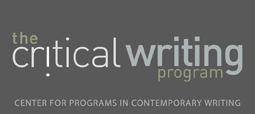David Meaney
The Professor as a Writer

About the Professor
Professor Meaney received a BS in Biomedical Engineering from Rensselaer Polytechnic Institute, an MSE in Bioengineering from Penn, and a PhD in BE from Penn. He is currently a professor at Penn and does research on how the cells and tissues of the central nervous system respond to traumatic injury.
Important Criteria for Student Writing
Here is a list of what professor Meaney looks for first in a paper (in priority order):
1) Having Original Ideas
2) Grammar & Mechanics
3) Style (He recommends Strunk & White as a resource.)
4) Demonstrating Mastery of Others' Ideas
Personal WRITING PROCESS
"I always outline. I am a slave to outlining. What I often do is if I'm writing for some purpose, if others are going to read what I write. Let's say I'm writing a paper with four of my students. I will outline and I will get to the point where I have paragraph by paragraph what the major thoughts are and the points within, and I will send that out for review. I don't even write full sentences in the beginning. And then it's incumbent on me once the outline is set up to sit down and spit out text. I tend to go through more than a couple revisions, because I think for me speed is a little bit more important. I just want to get something out there, provided that it's organized, and that's where this outline helps.
If I want to reorganize things, I do that in the outline. What I find is that I'll generate an outline, I'll switch things around, if I'm writing it with a couple other people I'll kind of get everyone's agreement that this is the way we're going to organize it. Then we put it together, and we reach a final product and I might have somebody outside read the final product who wasn't involved in the project. And at that point they could say, I think this chunk should come before the other chunk. It's written in such a way that it's really portable; maybe a transition sentence here or there and it's fine.
I know the data generally that I have before I put pencil to paper. When I often write papers, as we're planning the study, I pull out a couple blank sheets of paper and say okay, what's the first figure in the paper, what's the second figure in the paper, and go up to six or seven figures. Of course you would revise, well, no I don't think we should put that, I think we should put this. But what you have over the course of a couple of pieces of paper is the structure of the study. And as I've told you guys in lab, every figure equals one paragraph. So if you have six figures, you have six paragraphs that are in the results section, and the study starts to build itself out from there. And when you make these figures, you're also talking about what the data means when you plot it a certain way. Is there a linear trend, would we expect a linear trend based on what others have done in this field before? If we find a trend where others have not, what does that mean? All of these things go in to figures we should cover in the discussion. These are really before I've put the formal outline together in the Word document, so the analysis has been going on at least in my head for a little while."
MORE INFORMATION AND WRITING EXAMPLES
David Meaney's Page© 2013 The University of Pennsylvania
